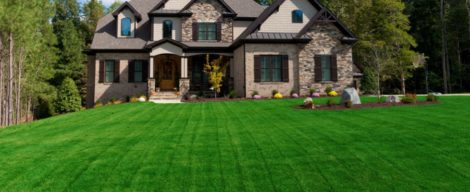Posted On:
Category:
How To Make Your Grass Look Like A Golf Course
How To Make Your Grass Look Like A Golf Cours

Ever wonder how a golf course keeps their fairways green and so manicured especially with so much traffic walking and riding on it all year round? It keeps their patrons coming back to play more golf and to enjoy the beautiful serene sights.
You can have the same look as your favorite golf course manicured fairways. Commercial businesses and personal residences can use the same techniques as the popular Tampa Bay Florida Golf Courses.
HGTV.com has some great ideas to achieve that impeccable lawn:
Choose the Right Grass
Bermuda or Zoysia grass make great home lawns, especially in the South. These grasses are well suited for hot summer temperatures, are cold tolerant during most of our winters and are drought tolerant in times of little rainfall. If you already have a different type of grass, you can still get your lawn looking amazing by the tips below.
Hire a Professional
Florida grasses and climate is not for a novice to navigate. Bring in a professional irrigation and sprinkler company to help guide you so you don’t waste valuable time and money getting the lawn you want.
Use the Right Tool
The best type of mower to produce golf course quality turf in your home lawn is a reel mower. A reel mower uses a reel and a bed knife to cut the blades of grass like a pair of scissors, unlike a rotary mower which typically has a single blade with a sharpened edge spinning at high velocity that doesn’t cut as cleanly. The precise cutting action of a reel mower creates an extremely clean cut and allows you to mow the grass at lower heights than a rotary mower will be able to produce.
Mow at Perfect Height
Biggest mistake: mowing your turf too short. Mowing your lawn at a height of 1 to 2 inches helps keep the turf healthy and promotes deeper rooting. The lower the height of cut, the shorter the root system and this can make the turf susceptible to disease, insect damage and other environmental stresses. You need to remove no more than 1/3 of the leaf blade each time you mow your lawn. This insures that the turf isn’t stressed from taking too much leaf tissue off. Mowing your lawn at least weekly during the growing season will insure that you don’t scalp the turf.
Aeration
Keep your lawn cultivated by aerating which creates small holes in your lawn, so water, air and nutrients can reach down to the grass roots. This helps the grass grow deeper roots and it also creates an opening to help it break through to the topsoil. Shallow roots are more likely to go dormant when warmer weather arrives, causing grass to turn brown. Deep roots help the grass stay strong, lush and green.
Fertilize Consistently
Golf course turf receives adequate nutrients from regular fertilizing. Fertilizers typically contain a balance of potassium and nitrogen, which helps the grass stay strong, even when it’s subjected to extreme temperature and heavy traffic. Weeds are kept at bay almost automatically, because no sunlight or moisture can get to them — the turf is too dense.
Optimize Water Coverage
Golf course superintendents use a number of techniques to ensure good water coverage. They choose specific sprinkler heads and nozzles to optimize water levels in different areas of the course — sprinkler heads are spaced so streams overlap. Watering cycles are scheduled at dusk and dawn to avoid evaporation and moisture loss caused by the sun.
Measure and Respond
Today’s golf courses use high-tech irrigation control systems with sophisticated sensors. These sensors record data on wind conditions, rainfall, evapotranspiration (ET), and outside temperatures, and automatically adjust watering cycles to optimize water levels on playable areas of the course.
Resistant Plants and Turf
When Florida experiences drought-like conditions, lawns and plants often suffer the consequences. That’s why many golf courses use native plants and more resistant turfs.
The United States Golf Association is taking these efforts a step further by supporting university grants to develop grasses that are resistant to drought, salt water and pests. For example, the University of Georgia recently developed a type of salt-resistant grass that can be watered with ocean water – no filtration needed.
Use Alternative Water Sources
Some courses irrigate their lawns with water from onsite water hazards and storm water ponds, reclaimed water facilities or even desalinized brackish or ocean waters. This conserves drinking water and allows the golf courses to water as much as they want — Tampa has no watering restrictions on reclaimed water.
Grow Greens Hydroponically
Many golf greens use a hydroponic system for growing grass. This system is installed during construction — a bulldozer makes a hole for the green that is between 12 and 16 inches deep. In more advanced systems, the hole is lined with plastic, before gravel, drainage pipes and sand are added. This creates an ideal environment for growth – the stand is sterile and the drainage is just right. The surface of the green is shaped to encourage runoff and prevent flooding.
Maintenance Plan
When your business depends on lush green landscapes to stay in business, you don’t take any chances. You make sure your state-of-the-art system has a state-of-the art maintenance plan, so everything stays running, like it should.








